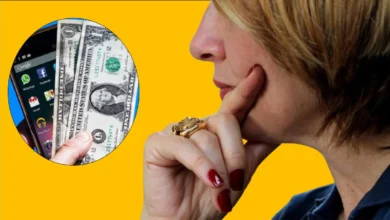Buy Now, Pay Later: How It Works and What You Need to Know

In recent years, the financial landscape has witnessed a significant transformation with the emergence of Buy Now, Pay Later (BNPL) options. These innovative payment plans have gained traction among consumers, particularly for high-ticket items such as concert tickets. A notable example is the 2025 Coachella festival, where more than half of General Admission attendees opted for BNPL options to manage the soaring ticket prices. This shift in consumer behavior raises essential questions about the implications of BNPL services—are they a responsible solution for managing expenses, or do they promote overspending?
The Popularity of BNPL Options
The concept of buying now and paying later has transcended its traditional roots and become ubiquitous in various sectors. Initially popularized by large purchases like electronics and furniture, BNPL is now making waves in everyday transactions. For instance, food delivery services like DoorDash are partnering with companies like Klarna to allow customers to split their takeout bills into manageable payments. This trend highlights a growing acceptance of BNPL as a viable option for consumers seeking flexibility in their spending habits.
The appeal of BNPL lies in its simplicity and accessibility. Many consumers appreciate the ability to enjoy products or experiences immediately while deferring payment without incurring interest charges—if paid within the stipulated timeframe. This has made it particularly attractive to younger generations who may face financial constraints but still wish to indulge in experiences like music festivals or dining out.
The Criticism Surrounding BNPL
Despite its advantages, the rise of BNPL options has not been without controversy. Critics argue that these payment plans can lead consumers down a path of overspending and increased debt. The ease of access to credit can encourage impulsive purchases that individuals might otherwise avoid if they had to pay upfront. This concern is particularly relevant in light of rising costs across various sectors, from housing to entertainment.
Moreover, some studies suggest that consumers using BNPL services may struggle with repayment, leading to missed payments and potential negative impacts on their credit scores. The allure of immediate gratification can overshadow the long-term consequences of financial decisions, prompting calls for greater regulation and consumer education regarding responsible use.
Responsible Usage: Finding Balance
While there are valid concerns regarding the potential pitfalls of BNPL options, it is crucial to recognize that these payment plans can be utilized responsibly. Financial literacy plays a pivotal role in ensuring that consumers make informed choices about how they manage their finances.
To maximize the benefits of BNPL options while mitigating risks, consumers should consider setting strict budgets and prioritizing essential purchases over discretionary spending. Additionally, understanding the terms associated with each payment plan—such as fees for late payments—can help individuals avoid falling into debt traps.
How Does “Buy Now, Pay Later” Work?
Buy Now, Pay Later is a type of short-term loan that enables consumers to purchase items ranging typically from $50 to $1,000 without having to pay the full amount upfront. Retailers partner with fintech companies like Affirm, Klarna, PayPal, and Sezzle to provide these financing options at checkout. The appeal lies in its simplicity and accessibility; consumers can acquire products without straining their budgets immediately.
The mechanics of BNPL are straightforward yet effective. When you opt for a Buy Now, Pay Later plan at checkout, you generally make an initial payment of about 25% of the total purchase price. The remaining balance is then divided into a series of installments that you will pay over a specified period—often ranging from a few weeks to several months.
For instance, if you purchase an item priced at $400 using a BNPL option:
- Initial Payment: You would make an upfront payment of approximately $100 (25%).
- Installments: The remaining $300 would be paid back in installments over the next few weeks or months—depending on the terms outlined by the provider.
Many BNPL plans are marketed as interest-free when payments are made on time; however, late fees can apply if payments are missed or delayed.
The Benefits of BNPL Loans
1. Immediate Access to Goods
One of the primary advantages of BNPL loans is that they provide immediate access to products or services without requiring full payment upfront. This feature is particularly beneficial for large purchases or emergencies when cash flow may be limited.
2. Interest-Free Payment Plans
Many BNPL providers offer interest-free repayment periods, allowing consumers to spread their payments over several weeks or months without incurring additional charges. This can make purchases feel more affordable compared to using a credit card where interest can quickly add up.
3. Simplified Budgeting
By breaking down larger expenses into smaller payments, BNPL loans can simplify budgeting for consumers. Knowing exactly how much needs to be paid each month helps individuals manage their finances more effectively.
The Downsides of BNPL Loans
1. Potential for High Interest Rates
While many BNPL loans advertise themselves as interest-free during the initial repayment period, failing to repay on time can lead to unexpected fees and interest rates soaring as high as 36.99%. These costs can quickly accumulate if you’re not vigilant about your payment schedule.
2. Impact on Credit Score
Another significant risk associated with BNPL loans is their potential impact on your credit score. Some lenders perform hard credit checks before approving a loan, which could temporarily lower your score. Additionally, if you miss payments or default on the loan, this negative information could be reported to credit bureaus, further damaging your credit standing.
3. Limited Consumer Protections
Unlike traditional credit cards that offer robust consumer protections such as fraud liability coverage and dispute resolution processes, BNPL loans generally lack these safeguards. If a product is defective or doesn’t meet your expectations, resolving disputes with BNPL providers may prove more challenging.
Should You Buy Now, Pay Later?
With both benefits and downsides in mind, how do you decide if a BNPL loan is right for you? Here are some considerations:
- Assess Your Financial Situation: Before committing to a purchase through BNPL financing, consider whether you can afford to pay for the item outright.
- Read the Terms Carefully: Always review the terms and conditions associated with any BNPL loan; hidden fees or charges could catch you off guard.
- Ensure Timely Payments: Make sure you can comfortably meet payment deadlines to avoid late fees and high-interest penalties.
- Consider Automatic Payments: Setting up automatic payments can help prevent missed deadlines and protect against accruing late fees.
- Evaluate Alternatives: Weigh the pros and cons of using a credit card versus a BNPL loan for your specific situation.
- Avoid Routine Purchases: Using BNPL for everyday expenses may lead to overspending; reserve it for larger purchases where necessary.
Conclusion: A Tool for Modern Spending
As Buy Now, Pay Later options continue to proliferate across various sectors, they represent both opportunities and challenges for consumers. While these payment plans provide a convenient way to manage expenses—especially during times when prices are rising—they also require careful consideration and responsible usage.
Ultimately, whether one views BNPL as a beneficial tool or a potential risk depends largely on individual financial habits and awareness. As we navigate this evolving landscape, it is essential for consumers to remain informed and proactive about their financial choices. Best regards, Finance Mate Club





